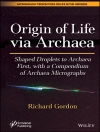The ability at the molecular level to keep track of time is a
property shared by organisms ranging from the simplest unicells to
humans. The primary feature of these biological clocks is their
ability to entrain to environmental stimuli. The dominant stimulus
comes from environmental light cues, which requires the existence
of photopigments sensitive to light. The exact identity of the
molecules involved in circadian photoreception has remained
elusive.
The classical view of the circadian system is of diverse
physiological rhythms regulated by a centralized clock structure.
This book presents evidence that challenges this view. Experiments
in both vertebrate and invertebrate systems demonstrate that the
circadian timing system is dispersed throughout the animal and
suggest that possibly every cell contains an autonomous clock
mechanism. A variety of tissues and cells contain have been shown
to maintain an oscillation when placed in vitro and removed from
any external cues or signals that originate from the classical
clock structures and/or the environment.
This book draws together contributions from an international and
interdisciplinary group of experts whose work is focused on all
aspects of the topic. Coverage includes the mechanisms of light
signalling to the vertebrate clock, the connections between central
and peripheral clocks, circadian gene expression patterns and
output pathways of clock mechanisms.
Table of Content
Chair’s Introduction (M. Menaker).
Non-rod, non-cone photoreception in rodents and teleost fish (R.
Foster, et al.).
Cryptochromes and inner retinal non-visual irradiance detection
(R. Van Gelder and A. Sancar).
General discussion I.
Light signalling in Cryptochrome-deficient mice (X.
Bonnefont, et al.).
Circadian light input in plants, flies and mammals (S. Panda, et
al.).
Orphan nuclear receptors, molecular clockwork and the
entrainment of peripheral oscillators (N. Preitner, et al.).
SCN: ringmaster of the circadian circus or conductor of the
circadian orchestra? (A. Davidson, et al.).
On the communication pathways between the central pacemaker and
peripheral oscillators (N. Cermakian, et al.).
Central and peripheral circadian oscialltors in
Drosophila (P. Hardin, et al.).
Integration of molecular rhythms in mammalian circadian system
(H. Okamura).
Circadian transcriptional output in the SCN and liver of the
mouse (J. Hogenesch, et al.).
The molecular workings of the Neurospora biological clock
(A. Froehlich, et al.).
Expression of the clock gene products in the suprachiasmatic
nucleus in relation to circadian behaviour (M. Hastings, et
al.).
Circadian rhythms in Drosophila (M. Rosbash, et al.).
The role of phosphorylation and degradation of h Per proteins
oscillation in normal human fibroblasts (K. Miyazaki, et al.).
Regulation of daily locomotor activity and sleep by hypothalamic
EGF receptor signalling (A. Kramer, et al.).
CK1 and GSK-3 in the Drosophila and mammalian circadian
clock (E. Harms, et al.).
Final general discussion.
Closing remarks (M. Menaker).
Index of Contributors.
Subject Index.
About the author
Derek J. Chadwick and Jamie A. Goode are editors for Molecular Clocks and Light Signalling and other scientific titles.












